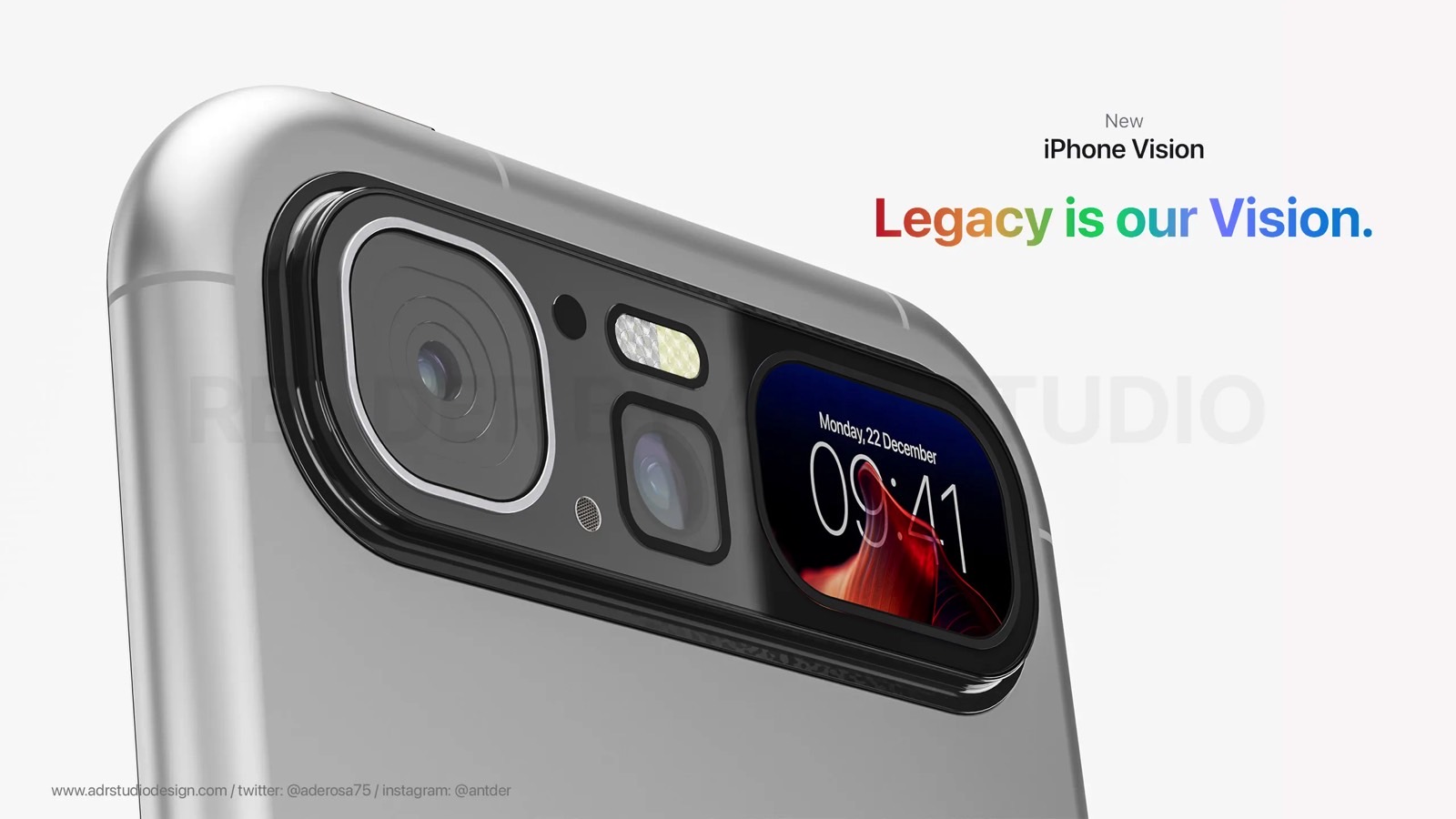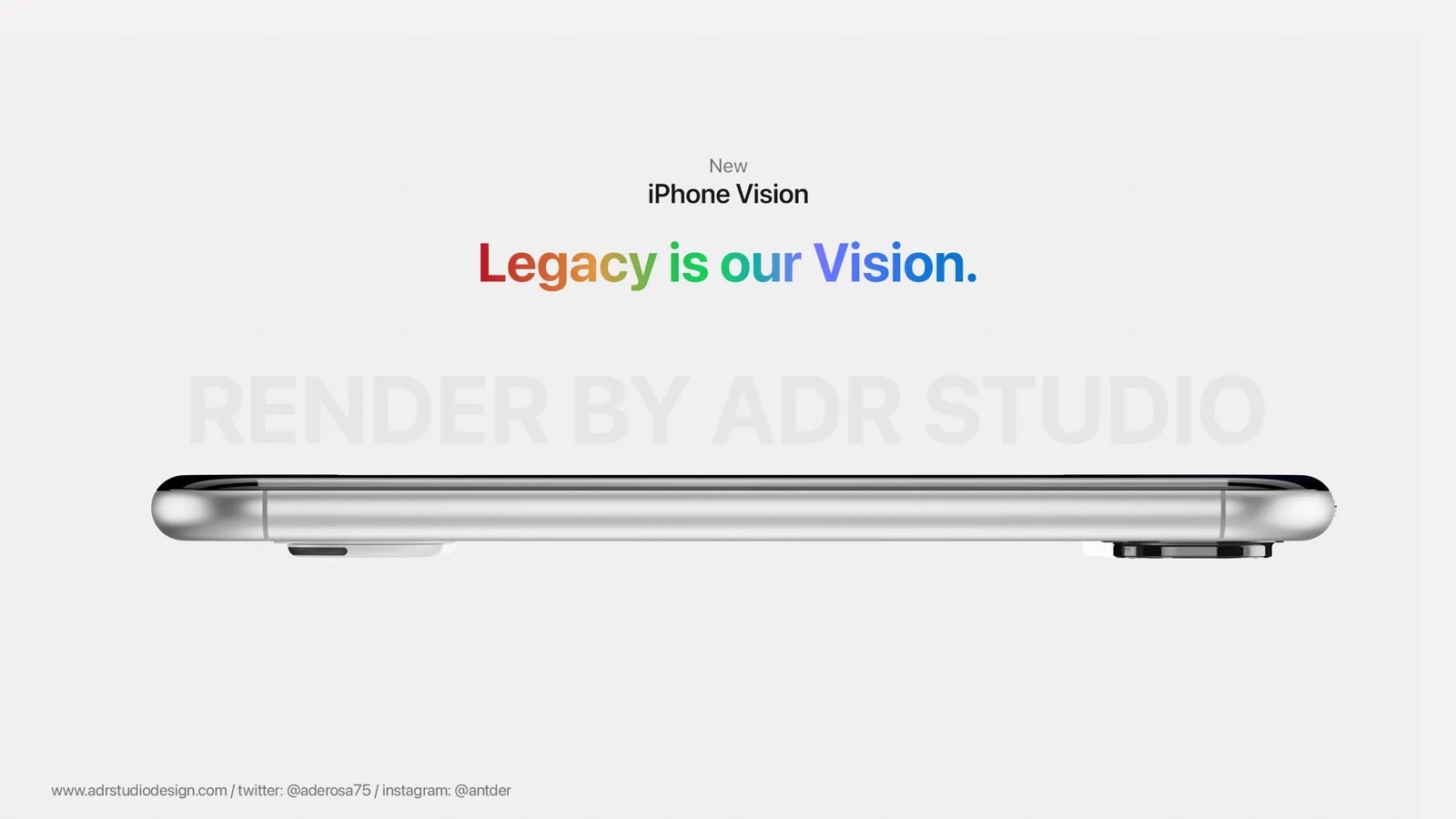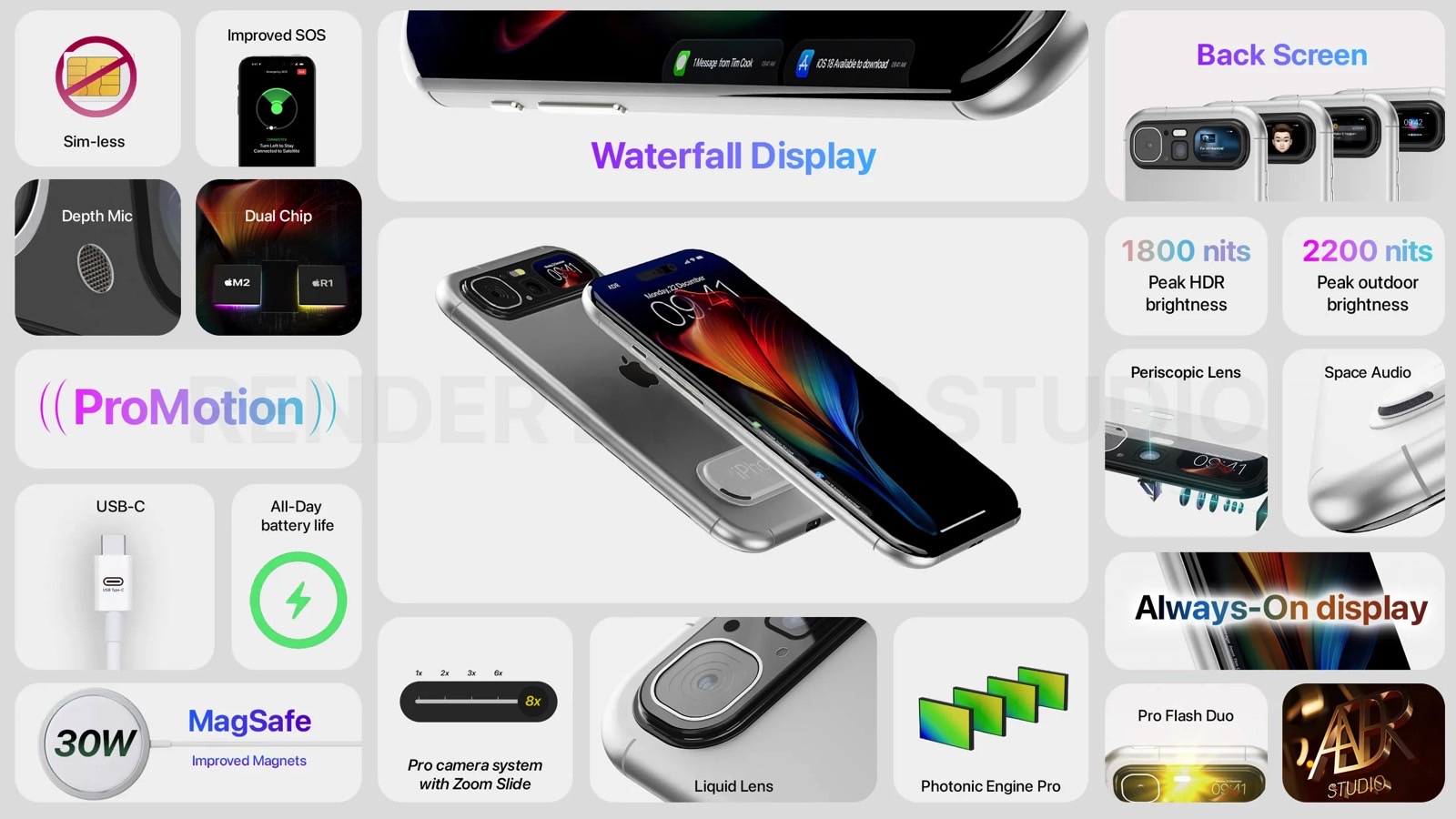If there’s one thing I’ve heard repeatedly in the 15 years since Apple introduced the iPhone, it’s that the device is boring. Apple reuses the same design for at least three years, delivering minor tweaks between major refreshes. But that’s absolutely not a problem, especially now. All smartphones look similar. They have large displays with hole-punch cameras on the front and a large protrusion on the back housing advanced camera components. Similarly, the iPhone 15 should be an iteration of the iPhone 14, as there’s no major iPhone design refresh planned for this year.
But that’s where independent designers can help. Apple will never manufacture an iPhone as exciting as these concepts, but the devices they imagine are interesting. Antonio De Rosa’s iPhone Vision concept in these images takes the current iPhone design to a totally new level.
As the name suggests, the iPhone Vision isn’t a foldable, even though that might be the first thing you imagine when someone mentions an iPhone concept.
Instead, it’s connected directly to Apple’s spatial computer, the real-life Vision Pro that Apple unveiled a few weeks ago. It also somewhat reminds me of the original iPhone and the iPhone X. This makes sense, as Apple would probably recycle design concepts for future creations.

The iPhone Vision features an all-screen design with curved “waterfall” edges. The curved display edges are probably the worst part about it, as a handset with curved edges would be more prone to accidental damage. Still, the symmetrical curvature of the front and rear panels would make it easier to handle than real-life iPhones with flat sides.
What’s more exciting is the rear-facing Liquid Lens camera that replaces the primary and ultra-wide angle lenses. The concept does feature a secondary periscope lens for better zoom. The iPhone 15 Pro Max will introduce the iPhone’s first periscope lens.

The rear has two other unique design elements. The second display provides quick access to notifications while the handset rests face-down on a table. That’s a handy feature if that’s how you usually hold the phone. I actually place my iPhone 14 Pro face down on surfaces because of the camera protrusion.
The iPhone Vision has a camera bump of its own. But the designer placed a secondary bump on the back to balance the former. This also lets you rest the iPhone flat on the back. The secondary bump acts as a speaker which supports Space Audio.

The designer imagines the handset runs on the same chips as the Vision Pro spatial computer: The M2 and R1. The latter handles all sensor input on the Vision Pro, and it might not be needed on an iPhone. But if that Liquid Lens lets you capture 3D photos and videos like the Vision Pro, then you might need the R1 chip.
The point here is that I hope nobody uses the Vision Pro to take photos of their kids like Apple suggested during the keynote. But it’ll be interesting to capture such images and videos using a future iPhone version. The iPhone Vision would also feature a depth microphone, which would come in handy for 3D recordings.
As for the M2, the chip might not be that efficient for an iPhone battery.

Other iPhone Vision details include USB-C connectivity and 30W MagSafe charging. Also, the phone appears to have solid-state buttons, and the Power button has been moved to the top of the screen. Finally, there’s no SIM card on this handset, something Apple is already doing with iPhones sold in the US.
The designer also imagined a price tag for the iPhone Vision. The phone would start at $1,599, which would make it even more expensive than the iPhone 15 Pro Max. Apple is rumored to increase the price of the latter. The company is also working on a high-end version of the iPhone Pro Max that might get an “Ultra” designator in the future. The iPhone Vision concept seems to be an Ultra iPhone.









